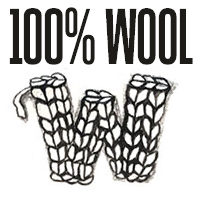Today’s Woolness & Me post was written by Felicity Ford AKA Felix (one half of Team Wovember!) who is here to talk about ‘woolness’ in the context of wool, disability, and walking with a stick.
The magical properties of wool were first revealed to me not through knitting, but through wet-felting. I was at a scrapstore in Devon where a friend was working when a large donation of merino wool tops in incredible colours was despatched. I was entranced by the colours and possibilities suggested by these luminous fibres and bought some before they were committed to the wondrous stash held by the scrapstore.
What would I do with my wool? I had no idea how to make felt. However, having newly moved to Oxford to begin my MA, I wanted some extra-curricular fun and quickly found a weekly felt-making class held at the Queen’s Park Arts Centre in Aylesbury. I had difficulty walking and using my hands at this point in my life but a car accessed through the government’s mobility scheme gave me a new sense of freedom and possibility: my wool and I headed for Aylesbury.
I have very happy memories of driving along windy Oxfordshire country roads to those classes. I spent happy evenings learning how to coax soft puffs of candy-coloured merino into felted fabric shapes. Liz Fiander (the tutor) was exceptionally relaxed and enabling. She encouraged experimentation and play, and taught me to adapt my weekly activities to the capabilities of my hands.
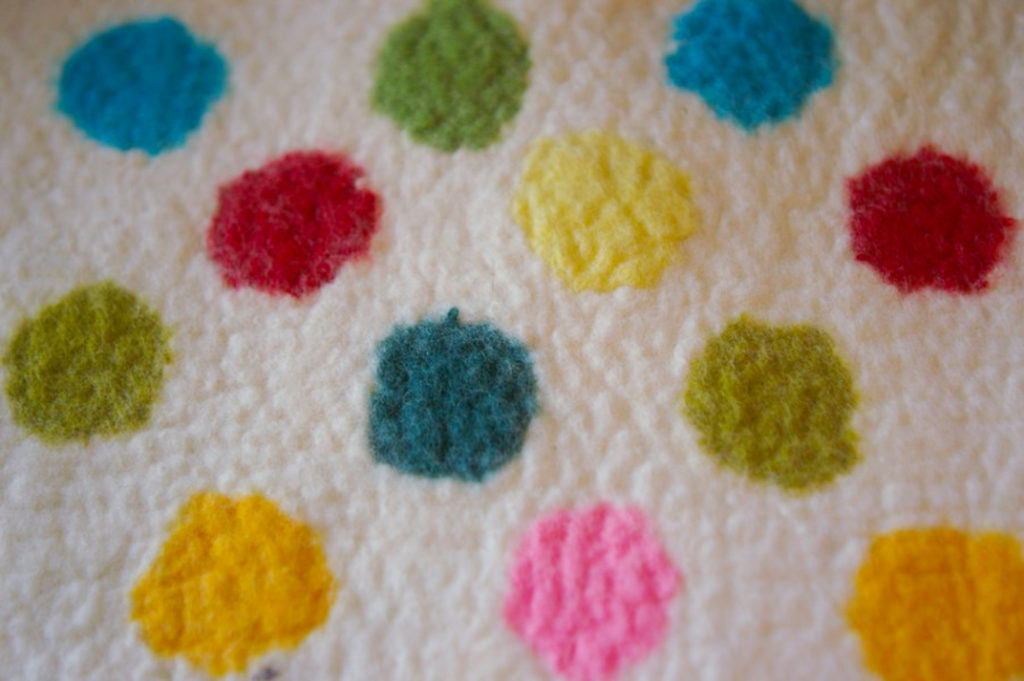
My first creation was a mischievous woolly copy of Damien Hirst’s spot paintings after which I progressed to making a series of cakes and muffins from felt, around forms made from bubble-wrap. I called them “comfort food”.
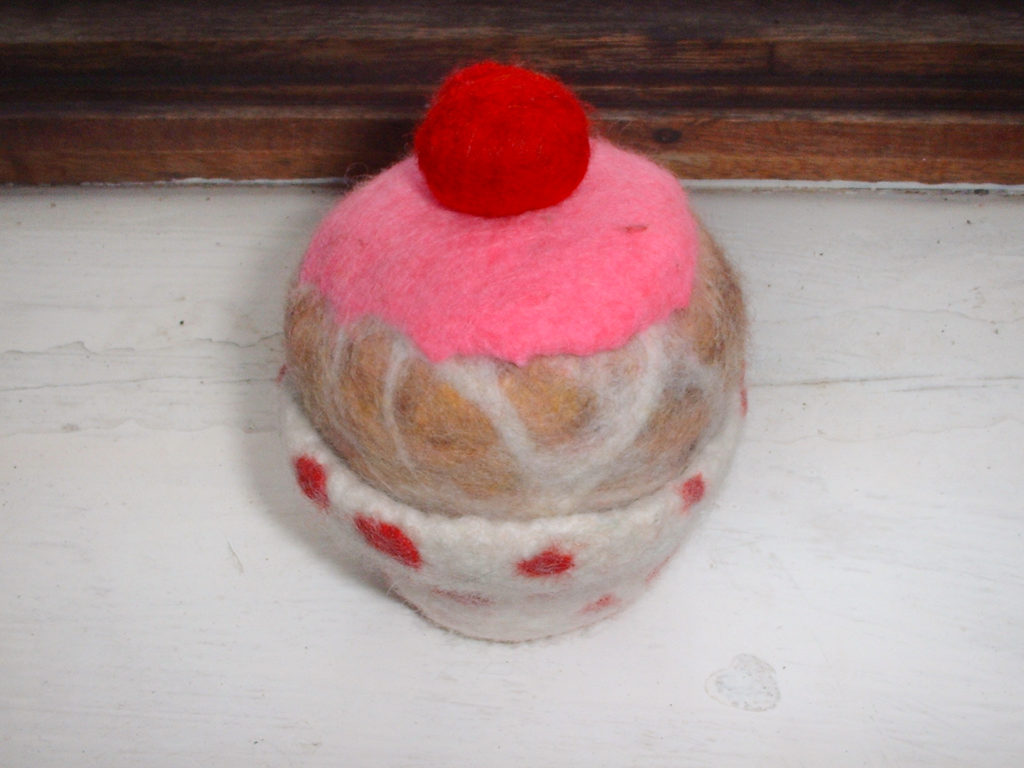
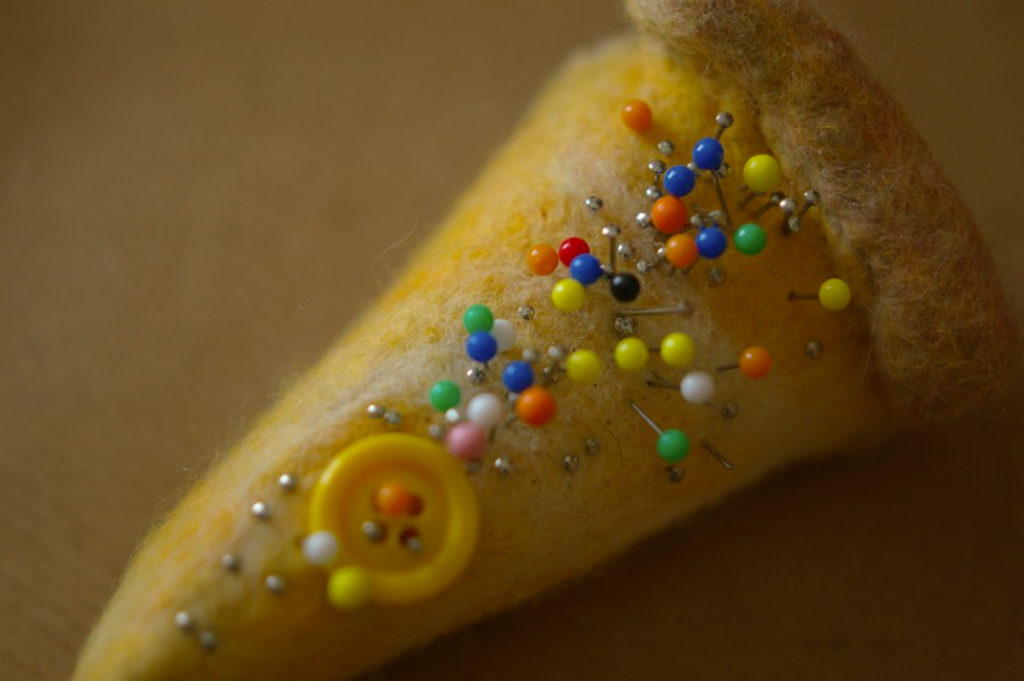
There was a tea-cosy, called “The Grim” after an expression used by my landlord, Andy – “grim reali-tea” – for basic no-frills strong brown tea…
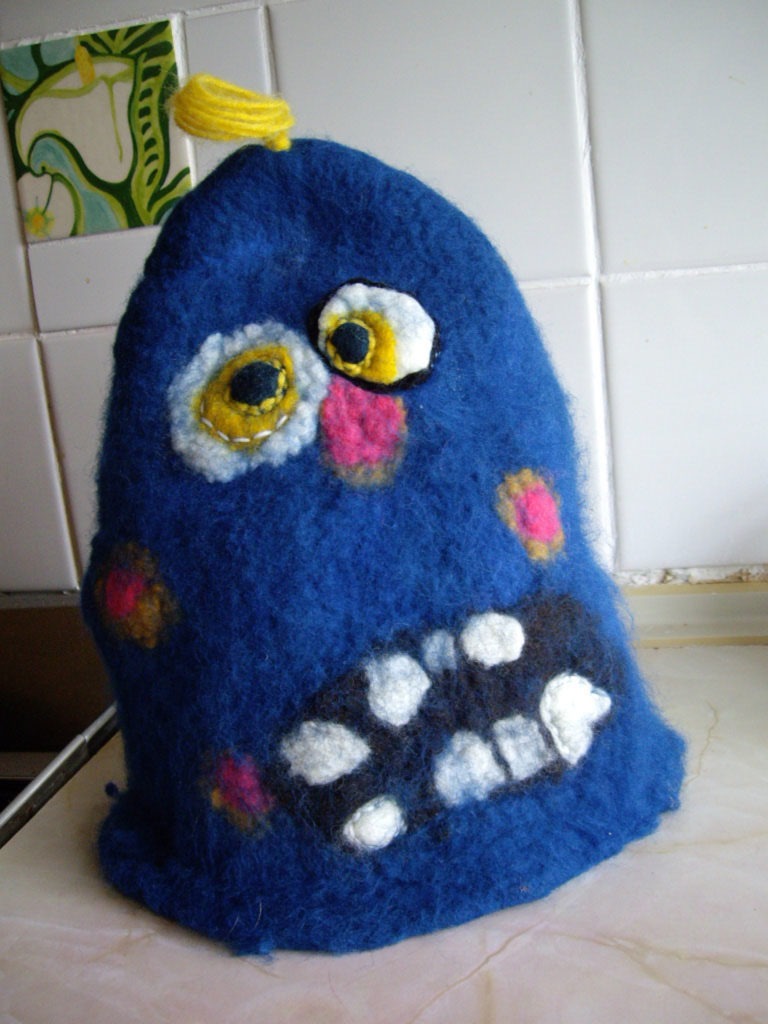
…and at one point I made a celebratory mouldy cheese in honour of a brie left on top of the fridge by the same landlord for many days (the stink was worthy of commemoration). When my confidence in the medium had grown, I created a picture using blue and white wool tops blended with streaks of silk fibres and then machine-stitched birds over the top. It still hangs in our living room today.
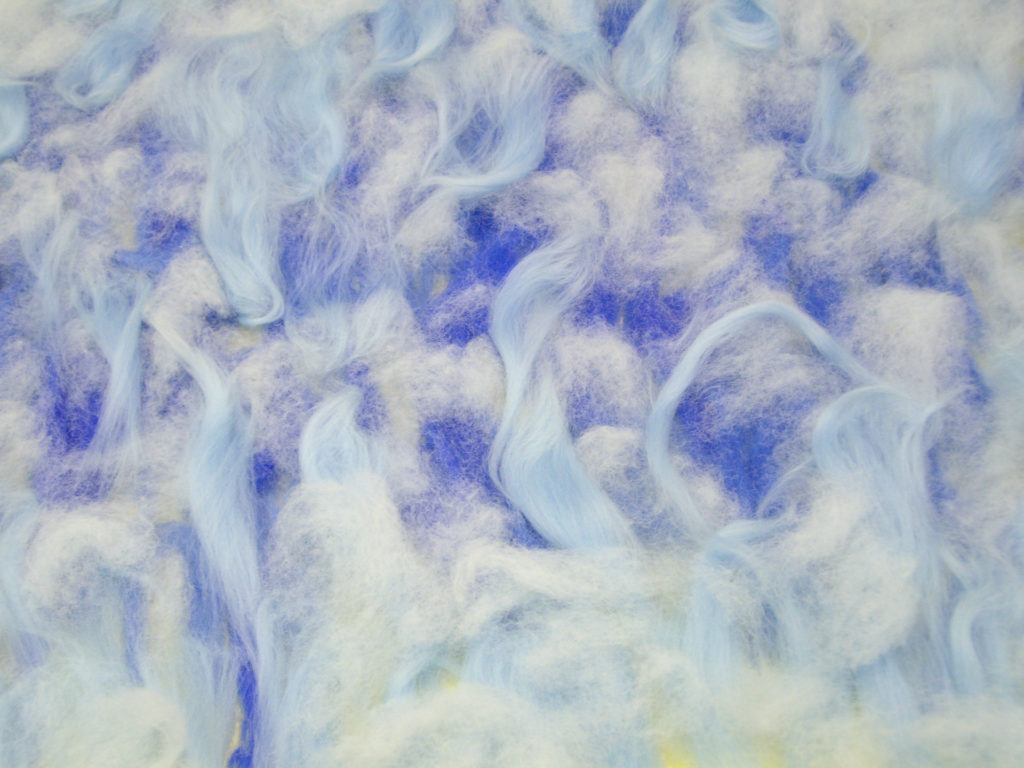
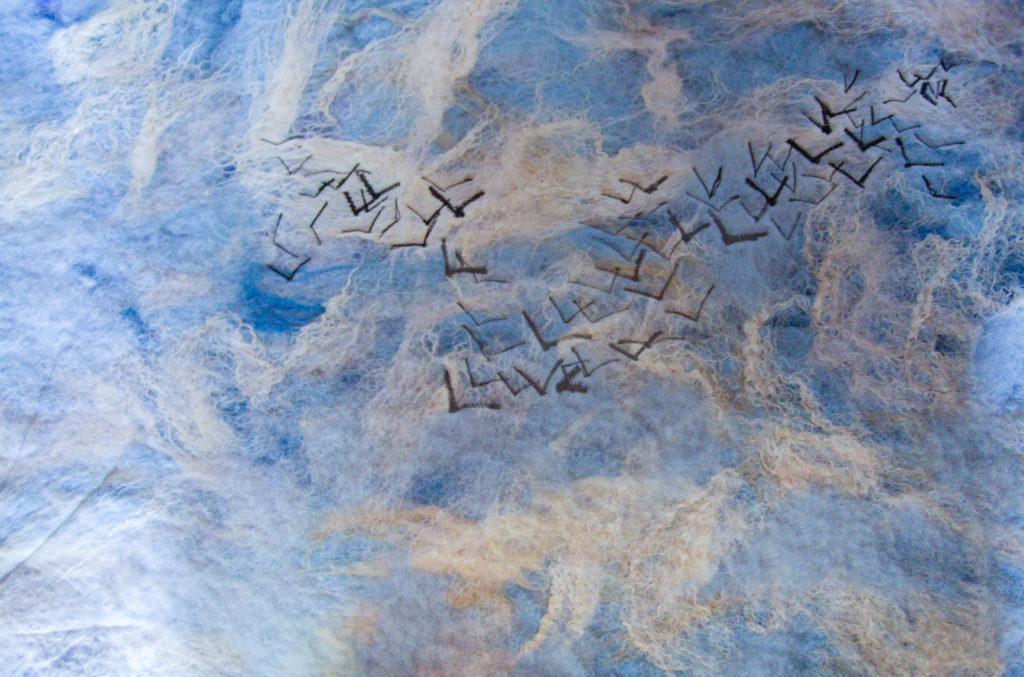
Liz taught us to lay our fibres between sheets of bubble-wrap, to wet them with a squirty bottle of water and a few flakes of soap, then to roll everything up in a towel like a swiss roll and work everything back and forth. Soapy water would squeeze out of both ends as everything was pummelled in one direction and then the other, little bumps in the bubble-wrap gripping unfelted fibres firmly in place. The roll was intermittently opened so the status of the felt could be checked. At some point, the firm massaging and rolling action would mesh the wool fibres closely enough that working directly on the surface of the felt could begin. Bubble-wrap and towels were thrust aside, and soap applied to the fabric-in-progress.
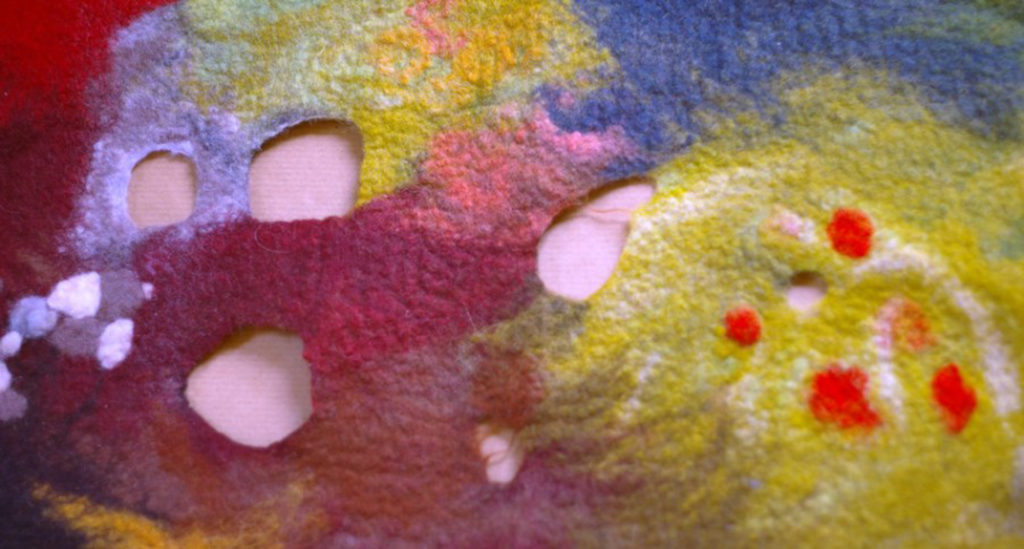
I can still recall the soft tide of suds growing around my fingers as I rubbed and massaged the wet, pre-felted wool; at first there was a feeling of lots of little loose fibres on the surface of the felt, but as I worked into it, the tiny hooks in the wool fibres became more firmly locked together, until I could easily and smoothly rub my soapy hands all over the surface of the felt. Once this stage was reached, I’d slowly rinse off all the soap with hot water, watching the felted thing I’d made emerge from beneath the bubbles. The last stage involved shocking the felt under a cold tap at which point the fibres locked together into their final form.
With sore hands I’d take this whole process very slowly indeed, and savour the part that was just playing with coloured wool tops and laying out fibres. I’d sit quietly and happily massaging my wool into its final form with no rush, deadline or goal.
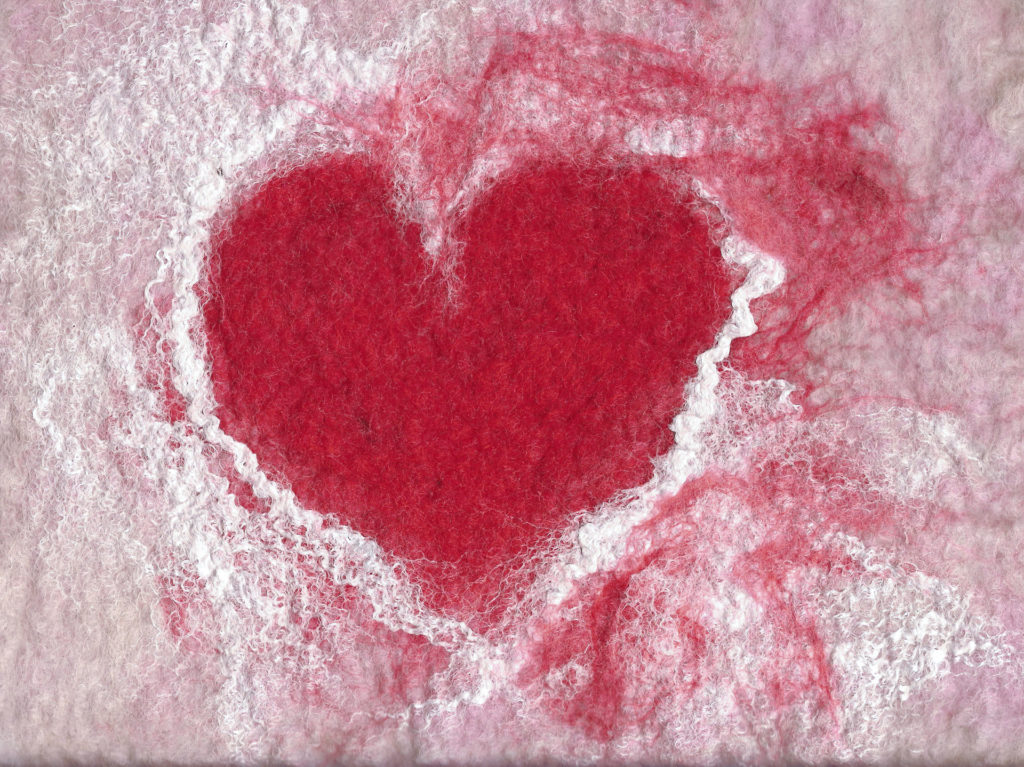
I thought a lot during that era of my life (and in the past two years in which my arthritis has become much more active again) about the new timings of things necessitated by having a slow and painful body. At times I was very angry at being decelerated by arthritis, but at others – like in the felt-making classes – I found brief and playful acceptance that felt like a positive emotional form of self care. In my MA, I recorded the sounds and rhythm of walking with a stick and I timed my beats to revise my understanding of the oft-used musical term Andante, which means “at a walking pace” (but whose walking pace?). I began thinking about the timings of moving in a chair; in a car; on a scooter; with a stick; with two sticks. I began building a creative and mischievous narrative about my body and its varying speeds being timed not by illness or arthritis or disability, but by a joyous internal dandelion clock.
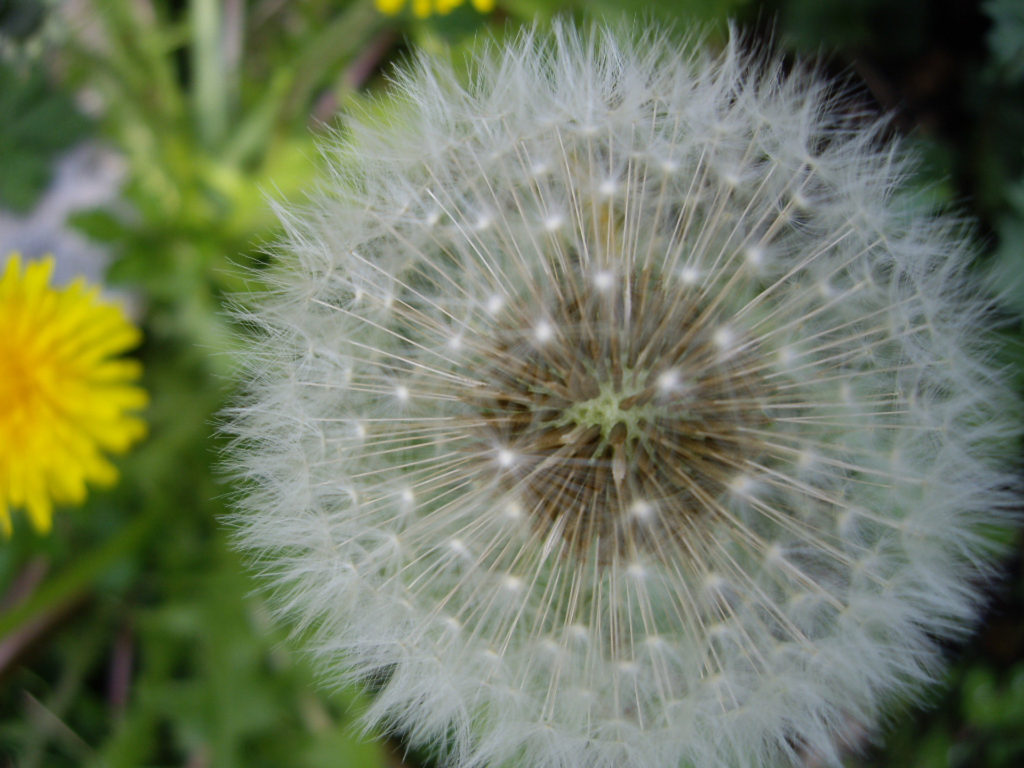
I covered my grey, NHS-edition walking stick with yellow and green felt blended to signify and celebrate the value and beauty of my own Andante; to draw resilience from some of my favourite flowers (that are often devalued as weeds); and to remind myself to thrive between the cracks of my pain like the dandelion does, at the edges of the pavement.
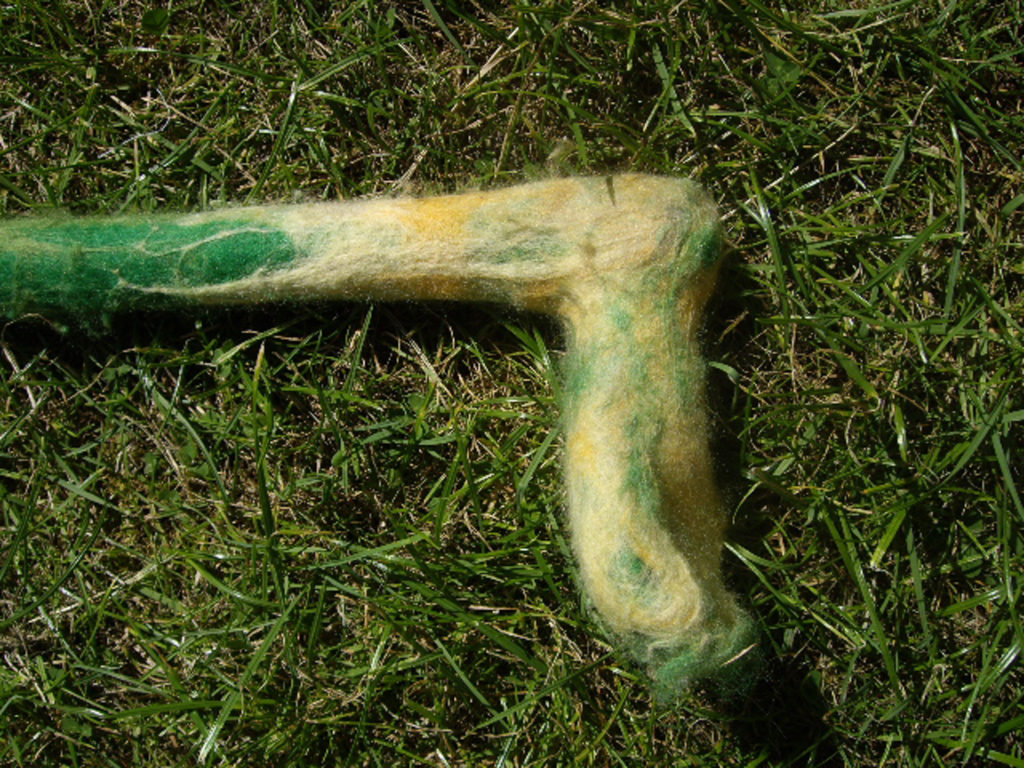
The woolly softness on my walking stick handle was a happy reminder about pacing and about my own sweet speed. It also made it easier to be out and about in public. It is my experience that when strangers see a young woman with a walking stick who otherwise looks quite well, they feel inexplicably entitled to ask invasive personal questions about one’s medical history. With my grey, NHS edition walking stick, going about my business at my own pace, I was forever being interrupted by well-meaning strangers asking what had happened to me; or what was wrong with me. It shouldn’t be incumbent on disabled people to fix this kind of ignorance, but I confess I much preferred life after covering my walking stick with wool. For from this point onwards, I noticed that over-entitled strangers would ask me where I got the cool stick from instead of asking more personal questions. I always took such enquiries as an invitation to expand on the wonders of wool and felt-making, which usually silenced the asker quite quickly. The fact is, I don’t want to talk to everyone in detail about my personal medical history. But wool? Well that’s different.
For me, the power to walk through the world as a disabled person on my own terms really goes back to that wool-covered stick. I think about it still and though I don’t use it at the moment, I have never lost my love for dandelions and the resilience and beauty that they symbolise to me.
Important Information: images used are © our woolness contributor, unless otherwise specified.
